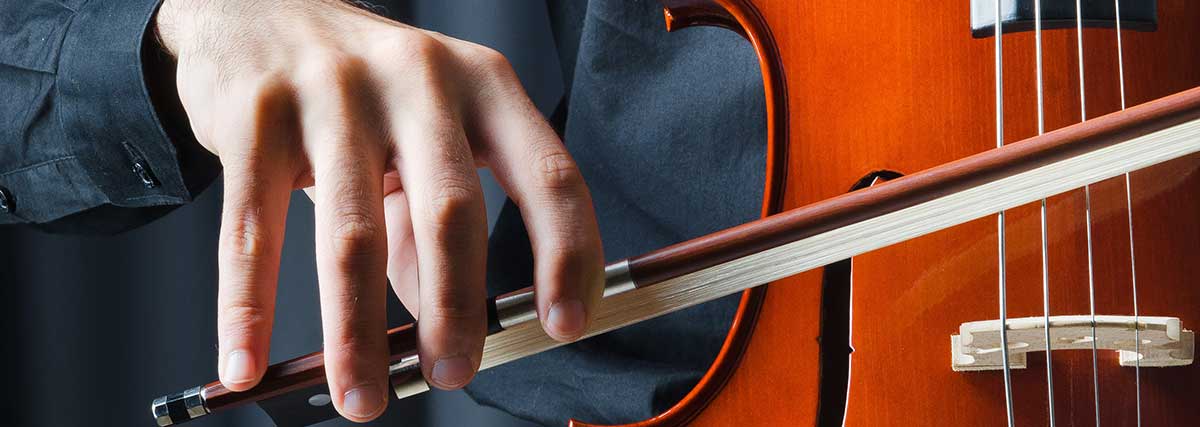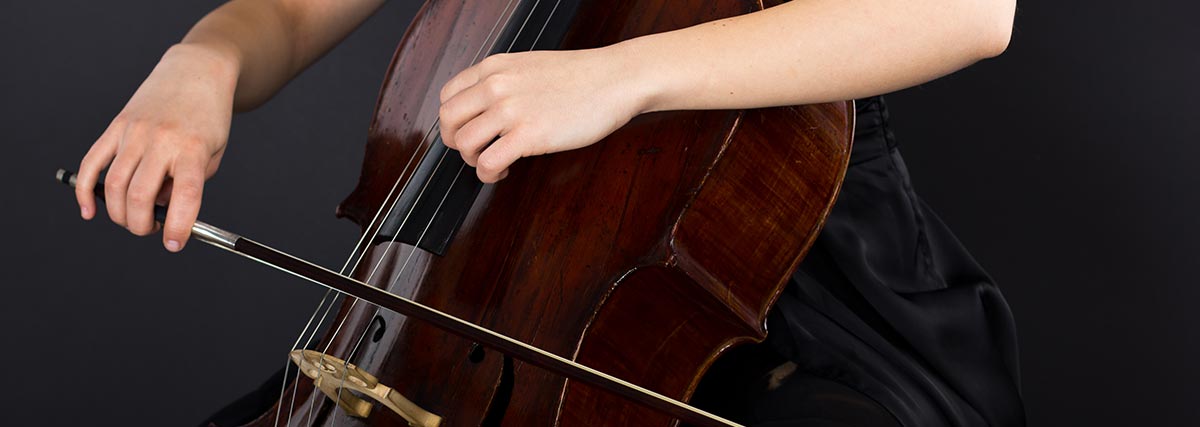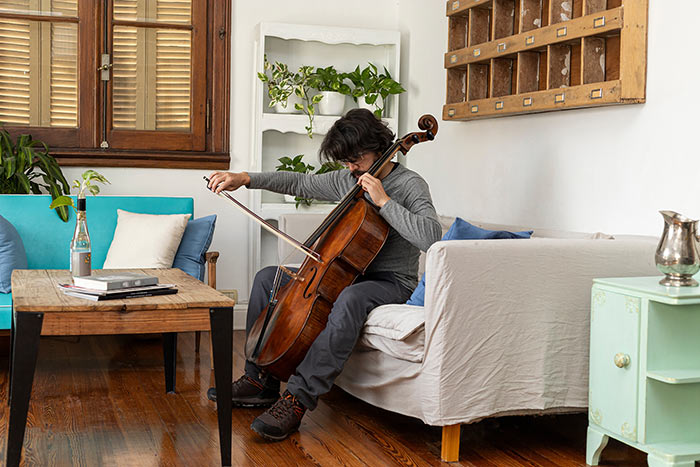If you’ve just begun learning the cello you might not realise that cellos require a certain amount of maintenance. Some of the more regular maintenance you can easily manage yourself, but some of the more serious and less frequent maintenance will need to be done by a luthier.
Rosin Build-up
Most people are very surprised to know that you need to wipe the rosin off your strings before and after playing. Naturally, the strings get a layer of rosin build-up that needs to be removed as it affects the sound (which becomes ‘fuzzy’). You won’t need to worry about this so much in the early stages of learning as you won’t be practicing for long periods of time, but as you progress you will need to rosin your bow more frequently, therefore there will be a greater build-up of rosin on your strings which will need to be removed. To remove the rosin build-up, use a cloth or a duster that you can keep in your case.
Changing Strings
The strings will only need to be changed when they break or if they have been over used. Strings break when the have been played a lot or when you tune the cello with the top pegs but go a little too far. It’s very normal to break strings! There is no need to panic, all you need to do is order another string from a good music shop or website such as String Zone and bring it to your lesson and your teacher will put it on for you. Alternatively a luthier will fit it for you in a shop. The likelihood of breaking a string as a beginner from playing is very unlikely as you won’t be playing for long periods of time or ‘attacking’ the strings as much as someone who is more advanced. Choosing which type of string to get can seem a little daunting at first, so be sure to ask your teacher. Generally speaking a good standard string such as a Classic Jargar or Larsen medium tension string would be a good choice.
Bow Re-hairs
The hair on the bow won’t last forever. Over time you will break hairs and you will end up with not very much hair left on your bow. The horse hair has tiny little hairs all over them, these minute hairs help ‘grab’ the string as you pull your bow across the strings; over time these get damaged from over use and you may find yourself reaching for your rosin more frequently, this is when it’s time to take a good look at your bow. In the first year or so of learning, you most likely won’t need a re-hair but if you do there are plenty of luthiers that provide this service. Bow re-hairs in London cost between £60-100, but again ask your teacher for a personal recommendation!
Changes of Weather
This time of year cellos start to complain. They are very fussy when it comes to extreme weathers. The Summer and Winter are seasons when you should be keeping a closer eye than usual on your cello as the wood expands and contracts causing seams to open which needs to be fixed by a luthier. Do not under any circumstances try to glue it back together yourself as you will damage your cello. In the Winter months be careful not to leave your cello in a very cold room or by a turned on radiator as this will cause a seam to come open or for your cello to go very out of tune. In the Summer months be aware if you are leaving your cello in a room out of it’s case as the sun coming through the window is enough to damage the wood of your cello or cause a seam to open. My top tip would be to get your cello looked over by your luthier every six months, preferably in the Summer and in the Winter to check everything is in full working order.
Old vs New Instruments
If you are a beginner you will most likely have a modern cello that has been made relatively recently. Modern cellos, generally speaking, are less troublesome (if they have been made well) than older cellos. If you happen to have an old cello, you will need to be a little more vigilant with checking it over, especially in the more extreme weathers. Old instruments can get a number of different issues over time such as the sound post moving, the bridge being worn down by the strings, seams opening due to old glue, varnish coming off due to age, or even problems such as wood worm. It’s definitely worth knowing where/who you got your cello from and always ask the same luthier to look over your cello as they will get to know it and it’s problems!
Case
Having a good protective hard case will ensure your cello is safe from weather damage and any knocks it might take. Lighter coloured cases are the best for reflecting sunlight and will ensure your cello isn’t roasting in it’s case without your knowledge! So think carefully before you purchase your smart black case. Modern cases are made from Carbon Fibre and are therefore a lot lighter than any other hard case. These cases will often have a suspension system built into them which can absorb small shocks to the cello whilst it’s in it. Hard cases also reduce weather damage to your cello, unlike a soft case (often called a ‘cello bag’) which hardly gives any protection to your cello.
Ultimately, maintaining your cello is easy and stress free if you know a good Luthier that you can call, so there is no need to get panicked when something goes wrong. If you have any other questions your teacher will always be happy to help you!











